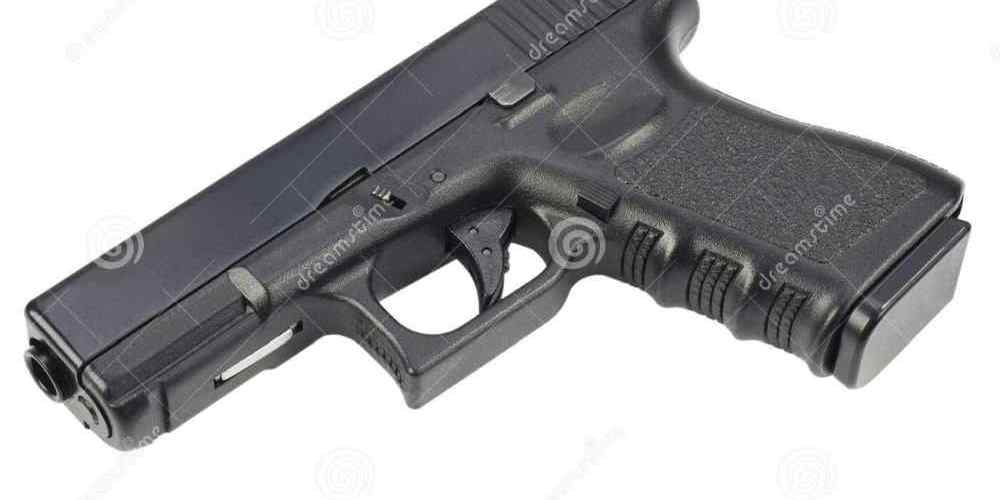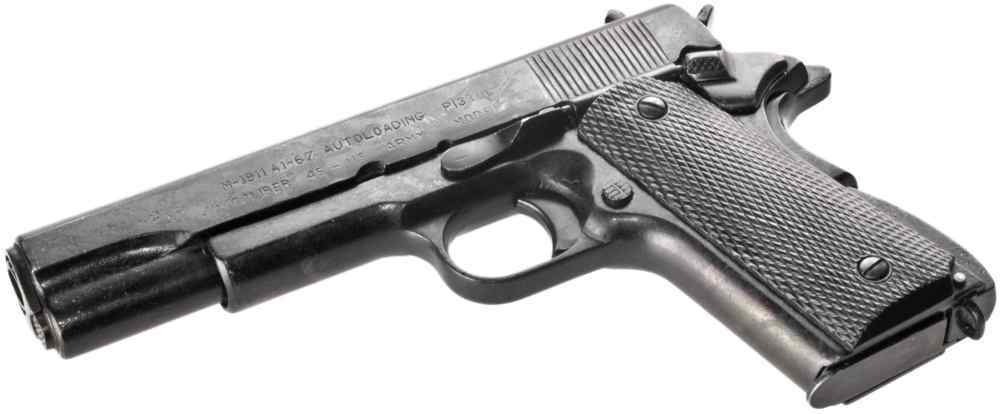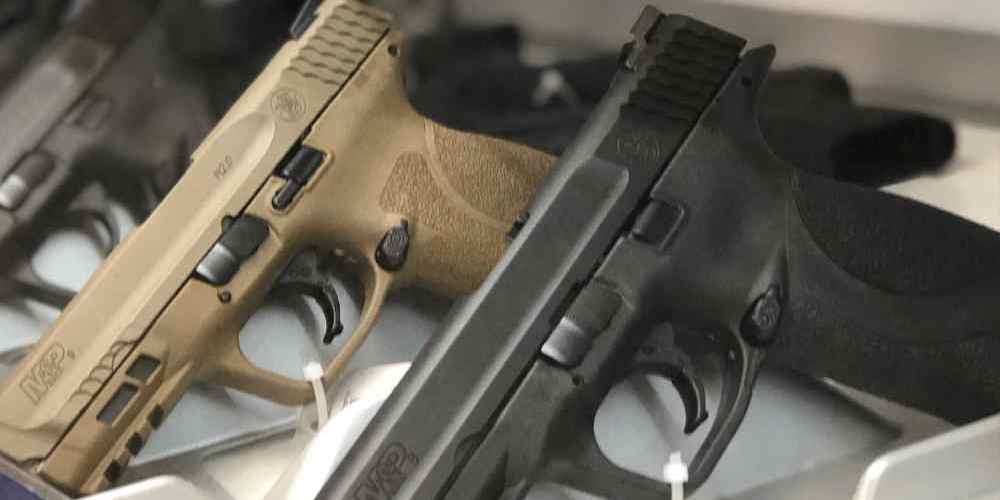“Unlock the full potential of your semi-auto pistol with expert guidance on magazines.”
Capacity Comparison: Single vs. Double Stack Magazines
When it comes to semi-automatic pistols, one of the most important components is the magazine. Magazines come in various sizes and configurations, with the two most common types being single stack and double stack. Understanding the differences between these two types of magazines can help you make an informed decision when choosing a pistol for self-defense, target shooting, or competition.
Single stack magazines are designed to hold rounds in a single column, with each round stacked directly on top of the other. This design allows for a slimmer profile, making the pistol easier to conceal and more comfortable to carry. Single stack magazines typically have a lower capacity compared to double stack magazines, with most holding between 6-10 rounds depending on the caliber of the pistol.
On the other hand, double stack magazines are designed to hold rounds in a staggered or double column, allowing for a higher capacity compared to single stack magazines. This design increases the overall width of the pistol, making it less comfortable to carry concealed but providing more rounds for self-defense or competition shooting. Double stack magazines can hold anywhere from 10-20+ rounds depending on the caliber of the pistol.
When comparing single stack and double stack magazines, it’s important to consider your intended use for the pistol. If you prioritize concealability and comfort for everyday carry, a single stack magazine may be the better option. However, if you prioritize capacity and firepower for self-defense or competition shooting, a double stack magazine may be more suitable.
In terms of maintenance, both single stack and double stack magazines require regular cleaning and inspection to ensure reliable performance. Over time, dirt, debris, and fouling can accumulate inside the magazine, causing feeding issues and malfunctions. To prevent this, it’s recommended to disassemble the magazine, clean all components with a solvent, and lubricate moving parts as needed.
When disassembling a magazine, be sure to follow the manufacturer’s instructions to avoid damaging any components. Most magazines can be easily disassembled using a simple tool or punch to remove the baseplate, spring, and follower. Once disassembled, inspect all components for signs of wear or damage, and replace any parts that show excessive wear.
After cleaning and inspecting the magazine, reassemble it in the reverse order of disassembly, making sure all components are properly aligned and seated. Test the magazine by loading it with dummy rounds and cycling them through the pistol to ensure smooth feeding and ejection. If any issues arise, disassemble the magazine again and troubleshoot the problem before using it for live fire.
In conclusion, understanding the differences between single stack and double stack magazines is essential for choosing the right pistol for your needs. Consider factors such as capacity, concealability, and maintenance when making your decision, and be sure to regularly clean and inspect your magazines to ensure reliable performance. By following these guidelines, you can maximize the effectiveness and reliability of your semi-automatic pistol for self-defense, target shooting, or competition.

Proper Maintenance Techniques for Semi-Auto Pistol Magazines
Proper maintenance of your semi-auto pistol magazines is crucial to ensure reliable performance and longevity. Neglecting to clean and inspect your magazines regularly can lead to malfunctions and failures when you need your firearm to function properly the most. In this section, we will discuss some key maintenance techniques to keep your semi-auto pistol magazines in top condition.
First and foremost, it is important to regularly clean your magazines to remove any dirt, debris, or fouling that may accumulate over time. This can be done using a cleaning solvent and a brush to scrub the inside and outside of the magazine body. Pay special attention to the feed lips and follower, as these are critical areas that can affect the feeding of rounds into the chamber.
After cleaning, it is a good idea to inspect the magazine for any signs of wear or damage. Check for cracks, dents, or bulges in the magazine body, as these can indicate structural weaknesses that may cause the magazine to fail. Inspect the feed lips for any signs of deformation or wear, as these can also affect the feeding of rounds.
In addition to cleaning and inspecting your magazines, it is important to regularly replace the magazine springs. Over time, magazine springs can lose their tension and become weak, leading to feeding issues and failures. It is recommended to replace magazine springs every 3-5 years, depending on how often the magazines are used.
When storing your magazines, it is best to keep them loaded with ammunition to help maintain the tension in the magazine spring. However, it is a good idea to rotate the ammunition in your magazines periodically to prevent bullet setback, which can cause dangerous overpressure when the round is fired.
Properly storing your magazines is also important to prevent damage and ensure reliable performance. Avoid exposing your magazines to extreme temperatures or moisture, as this can cause corrosion and rust. It is best to store your magazines in a cool, dry place where they are protected from the elements.
In conclusion, proper maintenance of your semi-auto pistol magazines is essential to ensure reliable performance and longevity. By regularly cleaning, inspecting, and replacing magazine springs, you can help prevent malfunctions and failures when you need your firearm to function properly. Remember to store your magazines properly to prevent damage and ensure they are ready when you need them. With these maintenance techniques, you can keep your semi-auto pistol magazines in top condition for years to come.
Understanding Magazine Springs and Follower Functionality
When it comes to semi-automatic pistols, one of the most crucial components is the magazine. The magazine is where the ammunition is stored and fed into the chamber of the firearm. Understanding how magazines work, specifically the springs and followers, is essential for proper functioning and maintenance of your pistol.
Magazine springs are responsible for pushing the cartridges up into the feeding position. They are under constant tension when the magazine is loaded, and they need to be strong enough to reliably feed ammunition into the chamber. Over time, magazine springs can weaken due to repeated compression and decompression. This can lead to feeding issues, such as failure to feed or stovepipes.
To maintain the reliability of your pistol, it is important to regularly inspect and replace magazine springs as needed. Some manufacturers recommend replacing magazine springs every 5,000 rounds, while others suggest doing so every 1-2 years. It is also a good idea to rotate your magazines regularly to ensure even wear on the springs.
The follower is another critical component of the magazine. The follower is a plastic or metal piece that sits on top of the magazine spring and pushes the cartridges up into the feeding position. The shape and design of the follower play a significant role in how smoothly the cartridges are fed into the chamber.
One common issue with followers is tilting, where the follower does not stay in line with the cartridges as they are being fed. This can cause feeding issues and malfunctions. To prevent tilting, make sure to keep your magazines clean and free of debris. Regularly inspect the followers for any signs of wear or damage, and replace them if necessary.
Proper maintenance of magazine springs and followers is essential for the reliable functioning of your semi-automatic pistol. By keeping your magazines clean, rotating them regularly, and replacing worn components, you can ensure that your pistol feeds ammunition smoothly and consistently.
In addition to maintenance, it is also important to understand the capacity of your pistol magazines. Magazine capacity refers to the number of rounds that can be loaded into the magazine. The capacity of a magazine is determined by its size and design, as well as any legal restrictions in your area.
Most semi-automatic pistols come with standard capacity magazines that hold anywhere from 10 to 17 rounds, depending on the caliber of the pistol. Some pistols also have extended magazines available that can hold more rounds. It is important to check your local laws regarding magazine capacity, as some areas have restrictions on the number of rounds a magazine can hold.
When choosing a magazine for your pistol, consider factors such as reliability, ease of loading, and compatibility with your firearm. It is also a good idea to have multiple magazines on hand for quick reloads during shooting sessions or in self-defense situations.
In conclusion, understanding magazine springs and follower functionality is essential for the proper maintenance and functioning of your semi-automatic pistol. By regularly inspecting and replacing worn components, keeping your magazines clean, and understanding magazine capacity, you can ensure that your pistol feeds ammunition smoothly and reliably. Remember to follow manufacturer recommendations for maintenance and always comply with local laws regarding magazine capacity. With proper care and attention, your pistol magazines will serve you well for years to come.
Exploring Different Magazine Materials: Steel vs. Polymer
When it comes to semi-automatic pistols, one of the most important components is the magazine. The magazine is where the ammunition is stored and fed into the chamber of the gun. There are many factors to consider when choosing a magazine for your pistol, including capacity, material, and maintenance. In this guide, we will explore the differences between steel and polymer magazines, two of the most common types of magazines used in semi-automatic pistols.
Steel magazines are the traditional choice for many gun owners. They are known for their durability and reliability. Steel magazines are typically heavier than polymer magazines, which can be a drawback for some shooters. However, the weight of the magazine can help to balance the weight of the gun, making it easier to control during rapid fire.
One of the main advantages of steel magazines is their longevity. Steel is a very durable material that can withstand a lot of wear and tear. Steel magazines are less likely to crack or break than polymer magazines, making them a good choice for shooters who put their guns through rigorous use.
On the other hand, polymer magazines are becoming increasingly popular among gun owners. Polymer is a lightweight material that is resistant to corrosion and rust. Polymer magazines are also less likely to scratch or dent than steel magazines, making them a good choice for shooters who want a magazine that will maintain its appearance over time.
One of the main advantages of polymer magazines is their weight. Polymer magazines are much lighter than steel magazines, which can be a big advantage for shooters who want to reduce the overall weight of their gun. Lighter magazines can also make it easier to carry multiple magazines for extended shooting sessions.
Another advantage of polymer magazines is their cost. Polymer magazines are typically less expensive than steel magazines, making them a good choice for shooters on a budget. However, it is important to note that not all polymer magazines are created equal. Some lower-quality polymer magazines may be prone to cracking or breaking under heavy use.
When it comes to maintenance, both steel and polymer magazines require regular cleaning and inspection. Steel magazines can be cleaned with a solvent and a brush to remove any dirt or debris. Polymer magazines can be cleaned in the same way, but it is important to avoid using harsh chemicals that could damage the material.
In conclusion, both steel and polymer magazines have their own advantages and disadvantages. Steel magazines are known for their durability and reliability, while polymer magazines are lightweight and cost-effective. When choosing a magazine for your semi-automatic pistol, consider your shooting style, budget, and maintenance preferences. Ultimately, the best magazine for you will depend on your individual needs and preferences.
Tips for Loading and Unloading Semi-Auto Pistol Magazines
Semi-auto pistols are popular firearms for self-defense, target shooting, and competition. One key component of a semi-auto pistol is the magazine, which holds the ammunition and feeds it into the chamber. Properly loading and unloading a semi-auto pistol magazine is essential for reliable performance and safety.
When loading a semi-auto pistol magazine, it is important to follow a few key tips to ensure smooth operation. First, make sure to use the correct ammunition for your pistol. Using the wrong caliber or type of ammunition can cause malfunctions and potentially damage your firearm. Check the manufacturer’s recommendations for the specific type of ammunition your pistol is designed to use.
Next, ensure that the magazine is clean and free of debris. Dirt, dust, or other contaminants can cause feeding issues and affect the reliability of your pistol. Wipe down the magazine with a clean cloth and inspect it for any signs of damage or wear.
When loading the magazine, be sure to insert each round properly. Push the round all the way to the back of the magazine and use your thumb to press it down firmly. Overloading the magazine can cause feeding issues, so be sure to follow the manufacturer’s recommended capacity for your specific magazine.
As you load each round, pay attention to the orientation of the bullets. Make sure they are all facing the same direction and are seated properly in the magazine. This will help prevent jams and ensure smooth feeding when you are shooting.
Once the magazine is fully loaded, insert it into the pistol and rack the slide to chamber a round. Be sure to keep your finger off the trigger until you are ready to shoot. Practice proper trigger discipline at all times to prevent accidental discharges.
When unloading a semi-auto pistol magazine, always point the firearm in a safe direction. Remove the magazine by pressing the magazine release button and pulling it out of the grip. Check the chamber to ensure there is no round chambered before proceeding to unload the magazine.
To unload the magazine, press down on the follower with your thumb to release tension on the spring. Remove each round carefully and inspect them for any signs of damage or defects. Store the ammunition in a safe and secure location away from children and unauthorized users.
After unloading the magazine, take the time to clean and inspect it for any signs of wear or damage. Wipe it down with a clean cloth and check the spring and follower for any signs of corrosion or deformation. Proper maintenance of your magazines will help ensure reliable performance and longevity.
In conclusion, proper loading and unloading of semi-auto pistol magazines is essential for safe and reliable operation. By following these tips, you can ensure that your firearm functions properly and is ready when you need it. Practice good habits and always prioritize safety when handling firearms.






